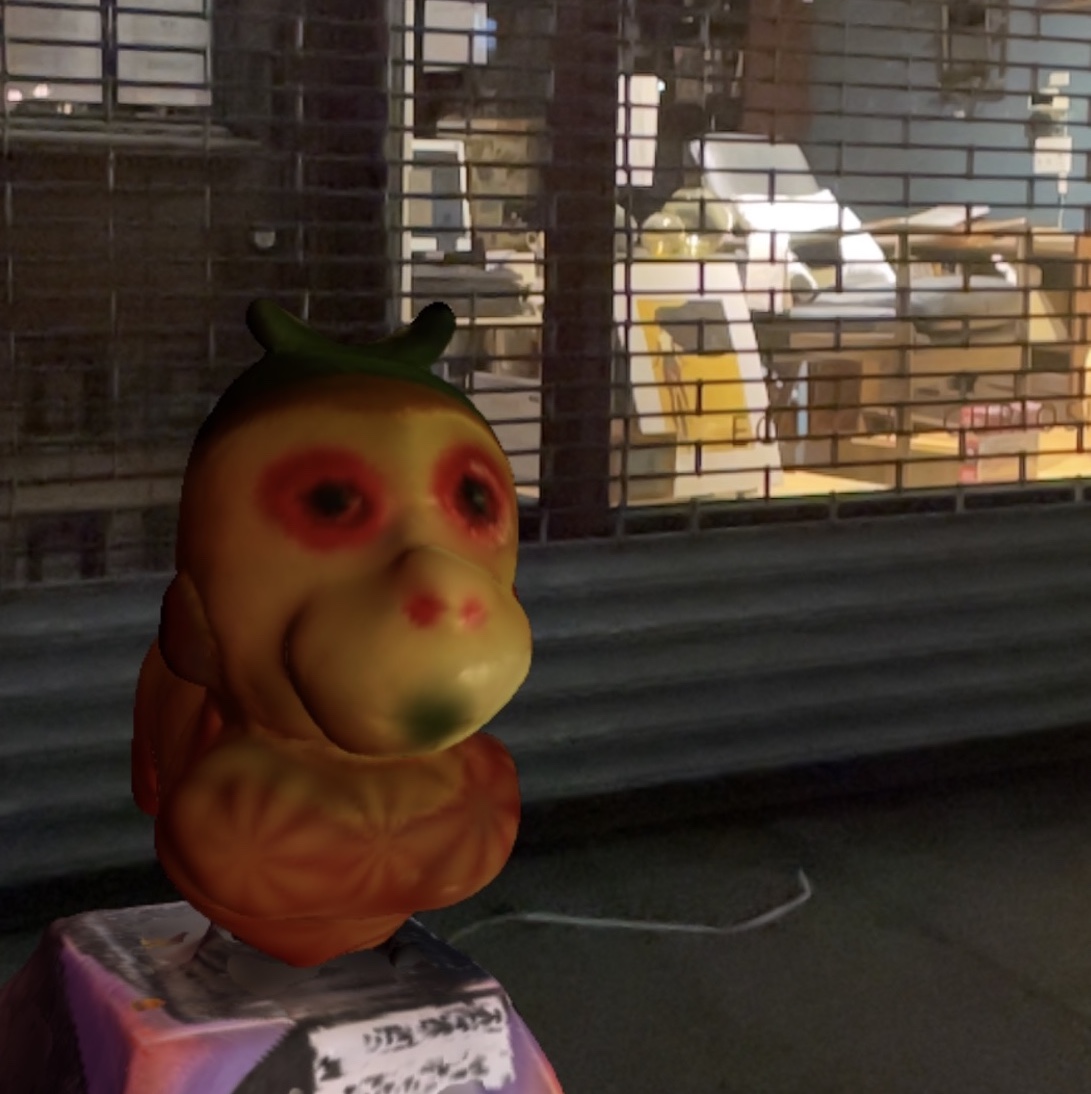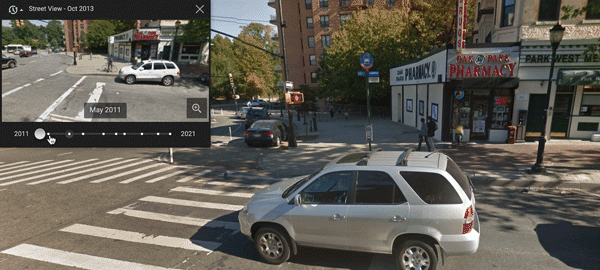Written by Rosalie Yu
+
Artwork by Rosalie Yu
In my practice I explore slow rituals of quantifying and archiving. I find something meditative about a lengthy and repetitive gathering process. Data is my working material. I sculpt and transform it into visualizations, resin sculptures, domestic installations, and printed material. These works are the focus of my data-gathering rituals, and often lead me toward mysteries, questions, and uncertainties, rather than the simple, bare facts we often assign to data.
![Augmented sculptures inspired by Yu's memories of the rides maintained by her grandfather.]()
![Generated with GAN style transfer.]()
My current project revolves around mechanical kiddie rides many of us remember from childhood. Raised as a fisherman, my grandfather left his seaside village for the city after his father’s boat capsized. He turned to the labor intensive work of repairing kiddie rides. He spent the rest of his work life painting, repainting, and transporting these machines and collecting their coins. Over the years, the rides acquired layers of amateur and sometimes grotesque makeup. I have come to ask whether there is something more going on with these rides. For me, their cuteness has morphed into the absurd, maybe even the cursed. My current piece is a quest to unpack this feeling of an object being physically or spiritually “cursed,” and ask what a curse is and if it has any connection to the unsettling internet phenomenon “cursed images.”
![Billboard ad from January 31, 1953]()
For a year now I’ve been collecting everything related to coin-operated rides. My search for these machines led me to old U.S. patents and catalogs. An article in Billboard Magazine called Kiddie rides “1953’s fast-growing business—a rare combination of wholesome fun and clever merchandising.” In post-WWII America, the rides became popular fixtures of suburban shopping malls, where working class families would buy a treat for their kids, a short ride that only cost a dime.
Decades later, these profit-making novelties landed on the shores of postcolonial Taiwan, during a period of rapid industrialization. Kiddie rides arrived in the form of colorful circus animals, cars, trains, airplanes, Mickey Mouse, and Doraemon characters. My grandfather stored them in our laundry room, and filled our balcony with grease and the harsh chemicals of paint. I have mental images of counting sunspots through his fishnet tank tops on the Wild Wolf motorcycle (HONDA CB125) with a broken pink elephant strapped behind me, on our way back to the apartment. I remember hanging laundry next to piles of faded machines waiting for a second life. I can still smell the plates of paint left on the floor that likely poisoned our three family dogs.
![Yu's augmented sculptures]()
It was my grandfather’s maintenance ritual that kept the rides alive, and I’ve come to believe his service also yielded to what I’m calling their curse. He gave them faces, glossy skins, joints, and voices. Over time, their spirits entered through his nose and moved into his brain, finally taking control over his body. In the end, the rides outlived my grandfather
After his passing, I began to think more about the complexities of my childhood and the dynamics between colonial powers. With decades of occupation, Taiwan’s own culture and interests continue to be influenced and suppressed by geopolitical neighbors and transnational capitalist forces. I now see the characteristics of postcolonialism manifested in their candy colors and exaggerated smiles, preserved under layers of acrylic glaze. Like many cursed objects, they are both attractive and poisonous. Spending time back in Taiwan due to visa restrictions, I began to deepen my investigation into why the objects of my childhood felt off, and what it was about the interplay between invisible forces and attractive fantasies that resembled curses and evil spells.
![Kiddie ride evolution in Brooklyn as seen on Google Street View.]()
![Online kiddie ride auctions at aarauctions.com.]()
Now, years later, using Street View histories, I’ve been drifting through streets of Taiwan trying to locate his rides. After many failed attempts, I teleported back to Brooklyn and spotted a ride in front of the local drugstore near my block. I’ve watched one ride morph from dinosaur to helicopter to a pony over the years, and finally disappear after Covid arrived. I noticed some are labeled [eg: horse 127] for auctions online, and some have identical stickers belonging to a Brooklyn repair shop. I was haunted by how my home resembled pictures of this workshop on Google Maps, and how the owner’s voice reminds me of my grandfather.
The process of collecting has led to more unsettled mystery. Intertwined with systems of global capitalism, consumption, migration, labor, and fantasy, my memories become fragmented. Linking my ritual of data-gathering with his ritual of maintenance is my effort to stay with the mystery of his labor, his cursed machines, the poisonous chemical, and the precarious status of Taiwan. For this project, the process has just begun; spending time and making peace with unanswerable questions are part of the ritual.
About the Author
Rosalie Yu (@rosalieyu) is a Taipei-born artist and researcher. Her practice uses data as a working material that she sculpts and transforms into visualizations, resin sculptures, domestic installations, and printed material. She often engages groups in workshops and social spaces, in which participants explore methods of quantifying and archiving.


My current project revolves around mechanical kiddie rides many of us remember from childhood. Raised as a fisherman, my grandfather left his seaside village for the city after his father’s boat capsized. He turned to the labor intensive work of repairing kiddie rides. He spent the rest of his work life painting, repainting, and transporting these machines and collecting their coins. Over the years, the rides acquired layers of amateur and sometimes grotesque makeup. I have come to ask whether there is something more going on with these rides. For me, their cuteness has morphed into the absurd, maybe even the cursed. My current piece is a quest to unpack this feeling of an object being physically or spiritually “cursed,” and ask what a curse is and if it has any connection to the unsettling internet phenomenon “cursed images.”

For a year now I’ve been collecting everything related to coin-operated rides. My search for these machines led me to old U.S. patents and catalogs. An article in Billboard Magazine called Kiddie rides “1953’s fast-growing business—a rare combination of wholesome fun and clever merchandising.” In post-WWII America, the rides became popular fixtures of suburban shopping malls, where working class families would buy a treat for their kids, a short ride that only cost a dime.
Decades later, these profit-making novelties landed on the shores of postcolonial Taiwan, during a period of rapid industrialization. Kiddie rides arrived in the form of colorful circus animals, cars, trains, airplanes, Mickey Mouse, and Doraemon characters. My grandfather stored them in our laundry room, and filled our balcony with grease and the harsh chemicals of paint. I have mental images of counting sunspots through his fishnet tank tops on the Wild Wolf motorcycle (HONDA CB125) with a broken pink elephant strapped behind me, on our way back to the apartment. I remember hanging laundry next to piles of faded machines waiting for a second life. I can still smell the plates of paint left on the floor that likely poisoned our three family dogs.

It was my grandfather’s maintenance ritual that kept the rides alive, and I’ve come to believe his service also yielded to what I’m calling their curse. He gave them faces, glossy skins, joints, and voices. Over time, their spirits entered through his nose and moved into his brain, finally taking control over his body. In the end, the rides outlived my grandfather
After his passing, I began to think more about the complexities of my childhood and the dynamics between colonial powers. With decades of occupation, Taiwan’s own culture and interests continue to be influenced and suppressed by geopolitical neighbors and transnational capitalist forces. I now see the characteristics of postcolonialism manifested in their candy colors and exaggerated smiles, preserved under layers of acrylic glaze. Like many cursed objects, they are both attractive and poisonous. Spending time back in Taiwan due to visa restrictions, I began to deepen my investigation into why the objects of my childhood felt off, and what it was about the interplay between invisible forces and attractive fantasies that resembled curses and evil spells.


Now, years later, using Street View histories, I’ve been drifting through streets of Taiwan trying to locate his rides. After many failed attempts, I teleported back to Brooklyn and spotted a ride in front of the local drugstore near my block. I’ve watched one ride morph from dinosaur to helicopter to a pony over the years, and finally disappear after Covid arrived. I noticed some are labeled [eg: horse 127] for auctions online, and some have identical stickers belonging to a Brooklyn repair shop. I was haunted by how my home resembled pictures of this workshop on Google Maps, and how the owner’s voice reminds me of my grandfather.
The process of collecting has led to more unsettled mystery. Intertwined with systems of global capitalism, consumption, migration, labor, and fantasy, my memories become fragmented. Linking my ritual of data-gathering with his ritual of maintenance is my effort to stay with the mystery of his labor, his cursed machines, the poisonous chemical, and the precarious status of Taiwan. For this project, the process has just begun; spending time and making peace with unanswerable questions are part of the ritual.
About the Author
Rosalie Yu (@rosalieyu) is a Taipei-born artist and researcher. Her practice uses data as a working material that she sculpts and transforms into visualizations, resin sculptures, domestic installations, and printed material. She often engages groups in workshops and social spaces, in which participants explore methods of quantifying and archiving.
